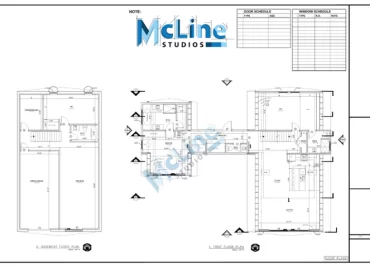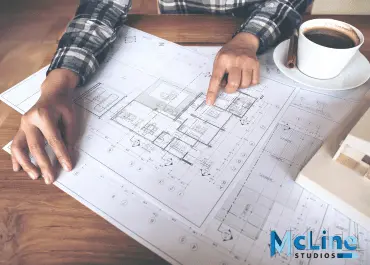At the core of the construction process are working drawings, the heroes that translate abstract concepts into tangible structures. Stripped of embellishments, these blueprints serve as the backbone of every architectural and engineering endeavor, providing a comprehensive guide for builders and craftsmen.
Working drawings are not mere blueprints; they are the lifelines of any construction project, embodying the synergy between innovation and execution. Let’s find out what exactly working drawings are and their types.
What are Working Drawings?
Working drawings in architecture, also known as construction drawings or technical drawings, are detailed and precise documents that communicate the design and specifications of a building or structure to the construction team.
These drawings serve as a comprehensive set of instructions for builders, contractors, and other professionals involved in the construction process. Working drawings are typically created by architects and engineers and include a range of information necessary for accurate and efficient construction.
Components of Working Drawings in Architecture
-
- Floor Plans: These drawings provide a top-down view of each floor of the building, indicating the layout of rooms, walls, doors, and windows. Dimensions, room names, and other relevant information are typically included.
-
- Elevations: Elevations are drawings that show the exterior views of the building from different perspectives. They provide details about the height, shape, and appearance of the building’s facades.
-
- Sections: Sections are vertical or horizontal cutaway views of the building, revealing the internal details and construction methods. Vertical sections typically show the interior details, while horizontal sections may depict details like floor and ceiling heights.
-
- Details: Detailed drawings focus on specific components or elements of the construction, providing in-depth information about how certain parts of the building should be constructed. This can include joinery details, structural connections, and other specifics.
-
- Site Plans: Site plans show the building about its surroundings, including property lines, neighboring structures, and landscape features. They may also include information on utilities, drainage, and other site-specific details.
-
- Mechanical, Electrical, and Plumbing (MEP) Drawings: These drawings detail the layout and specifications for the mechanical, electrical, and plumbing systems within the building. This includes HVAC (heating, ventilation, and air conditioning), electrical wiring, plumbing pipes, and other related systems.
-
- Schedules and Specifications: Drawings are often accompanied by schedules and specifications that outline the materials, finishes, and construction methods to be used. This information helps ensure consistency and quality in the construction process.
Working drawings are crucial for the successful execution of a construction project, as they provide a clear and standardized set of instructions for all parties involved. These drawings help prevent misunderstandings, ensure compliance with building codes and regulations, and facilitate efficient and accurate construction.
Types of Working Drawings
Working drawings convey the necessary information for the construction and assembly of a structure or system. They are used by various professionals involved in the construction process, such as architects, engineers, and contractors. Here are four types of working drawings:
Architectural Drawings

Architectural drawings are visual representations of a building or structure that communicate design and
construction details to various stakeholders involved in the construction process. These drawings serve as a means of conveying the architect’s design intent, specifications, and instructions to builders, contractors,
engineers, and other professionals involved in the construction project. Architectural drawings can take various forms, each serving a specific purpose. Architectural drawings consist floor plans, elevations, sections, and details.
Structural Drawings
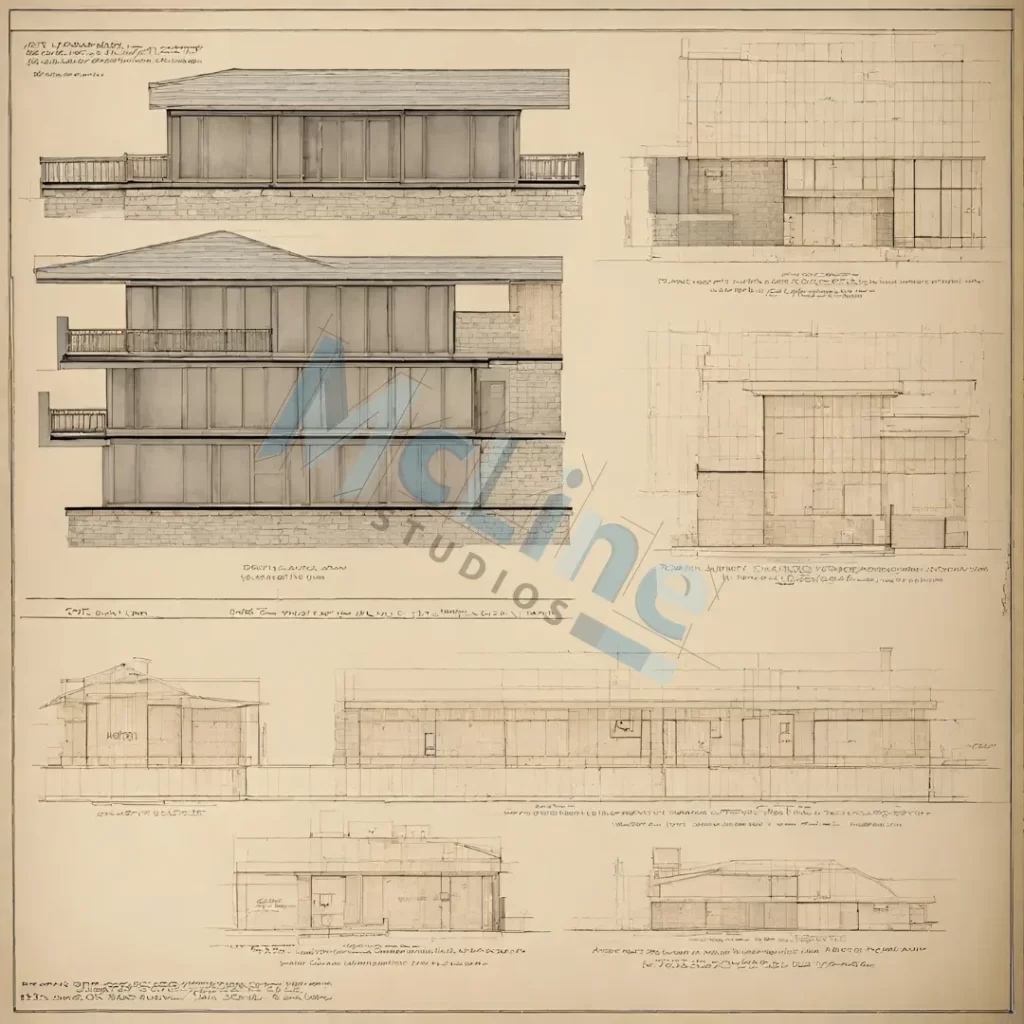
-
- Foundation Plans: These drawings outline the design and dimensions of the building’s foundation, including footings, piers, and other support structures.
-
- Beams and Columns: Illustrations of beams and columns show their size, shape, and placement, indicating how they support the load of the structure.
-
- Roof Framing Plans: These drawings detail the structure and layout of the roof, including the type of roof trusses, beams, and supports.
-
- Detail Drawings: Structural details provide additional information about connections, reinforcements, and other elements crucial to the integrity of the structure.
Electrical Drawings
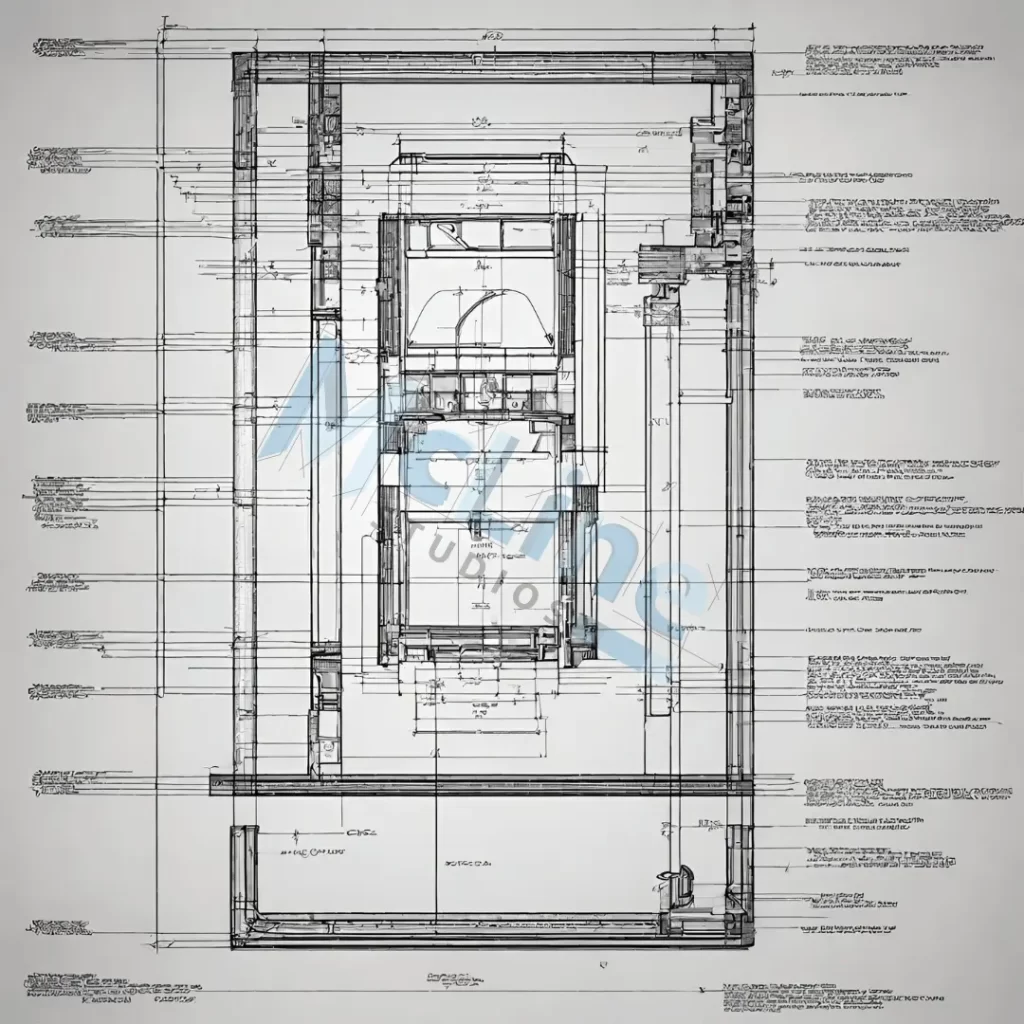
-
- Single Line Diagrams: These diagrams show the electrical system’s overall layout, including main
components like transformers, distribution panels, and major connections.
- Single Line Diagrams: These diagrams show the electrical system’s overall layout, including main
-
- Power Plans: Power plans illustrate the placement and wiring of outlets, switches, and fixtures throughout the building.
-
- Lighting Plans: These drawings focus specifically on the placement and specifications of lighting fixtures, indicating their type and wattage.
-
- Schematic Diagrams: Schematics provide a detailed representation of the electrical circuits, showing the connections and components in a simplified manner.
Plumbing Drawings
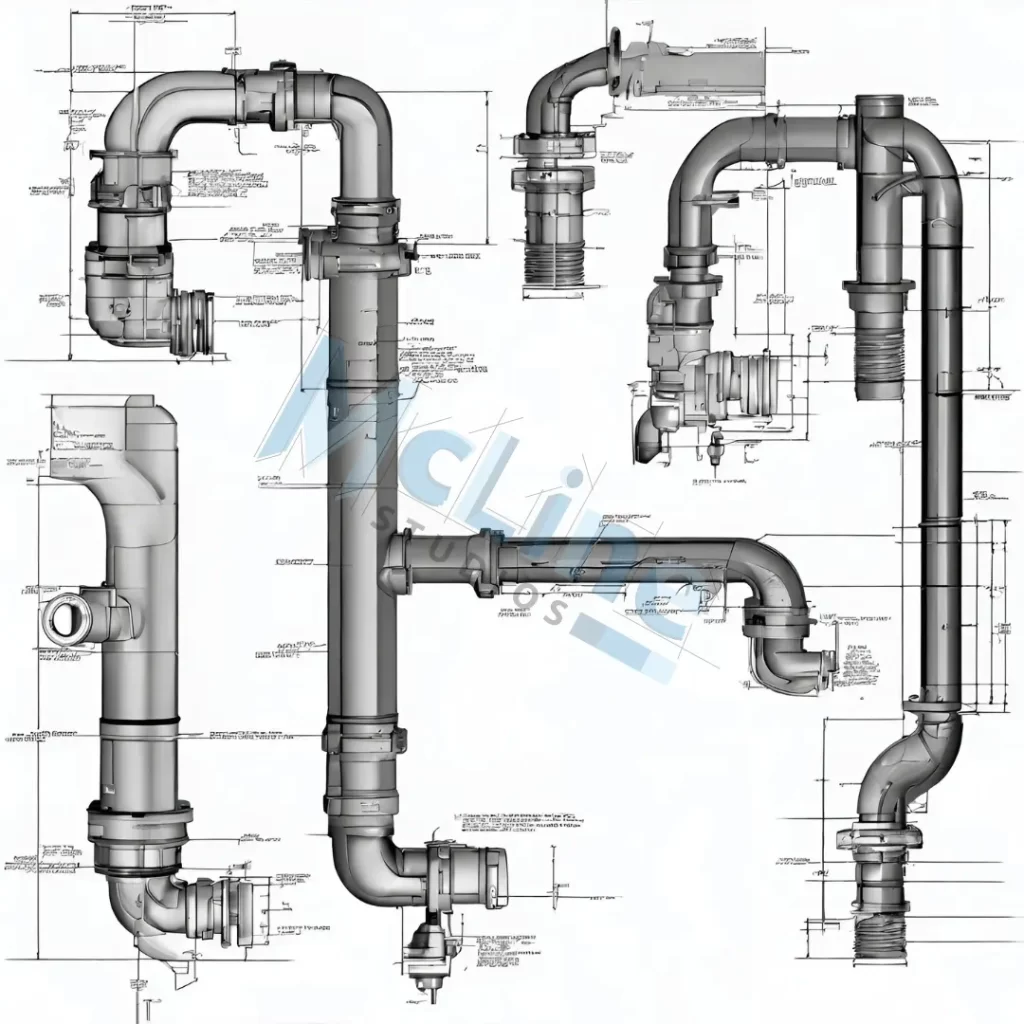
-
- Plumbing Plans: These drawings display the layout of plumbing fixtures, pipes, and connections throughout the building, including locations of sinks, toilets, and water heaters.
-
- Isometric Drawings: Isometrics provide a 3D representation of plumbing systems, showing the relationship between pipes, fixtures, and other components.
-
- Details of Fixtures: Detailed drawings of plumbing fixtures, such as sinks, toilets, and showers, include
dimensions and installation specifications.
- Details of Fixtures: Detailed drawings of plumbing fixtures, such as sinks, toilets, and showers, include
-
- Piping and Plumbing Riser Diagrams: These diagrams show the vertical distribution of plumbing pipes within a building, indicating connections between floors.
These types of working drawings collectively provide a comprehensive set of information essential for the successful construction of a building or infrastructure project.
Who Prepares Working Drawings?
Working drawings in architecture are a collaborative effort involving key professionals. Architects, central to the process, translate design concepts into detailed plans, encompassing floor plans, elevations, and specifications.
Drafters, guided by architects, use CAD or traditional methods to ensure drawings meet industry standards. Engineers contribute expertise,
providing detailed plans for structural, mechanical, and electrical components. Interior designers contribute plans for furniture layouts and
finishes, while landscape architects detail outdoor spaces.
In design-build or integrated projects, contractors provide insights into construction methodologies. Together, these professionals create
comprehensive working drawings that serve as vital guides for construction, containing essential information on dimensions, materials, and
construction techniques. These drawings ensure the architectural design is realized while adhering to building codes and regulations.
Difference Between Shop Drawings and Working Drawings
Shop drawings and working drawings serve distinct purposes in the construction and design process. Here are the key differences between shop drawings and working drawings:
1. Purpose:
– Shop Drawings: These drawings are detailed illustrations or diagrams created by contractors, subcontractors, manufacturers, or suppliers. They provide specific details about how components will be fabricated, installed, or assembled. Shop drawings are typically created after the
contract is awarded and are used for fabrication and installation purposes.
– Working Drawings: Working drawings, also known as construction drawings or design drawings, are created by architects or engineers during the design phase. They are comprehensive and include plans, elevations, sections, and details necessary for the construction of the project. Working drawings serve as a guide for contractors to build the structure and are part of the contract documents.
2. Level of Detail:
– Shop Drawings: These drawings are highly detailed and focus on specific elements or components of the project. They include dimensions, materials, fabrication methods, and other details relevant to the construction process.
– Working Drawings: Working drawings provide a broader overview of the entire project. They include information about the overall design, structural elements, MEP (mechanical, electrical, plumbing) systems, and other aspects of the construction.
3. Approval Process
– Shop Drawings: Typically, shop drawings need to be reviewed and approved by the design professionals (architects or engineers) before
fabrication and installation can proceed.
– Working Drawings: These drawings are part of the contract documents, and contractors are expected to follow them. They do not typically
require a separate approval process during the construction phase.
In summary, shop drawings focus on the detailed fabrication and installation of specific components, while working drawings provide a comprehensive overview of the entire project and guide the construction process.
Conclusion
In conclusion, working drawings serve as the indispensable bridge between design vision and tangible construction. Their meticulous detailing and precision facilitate effective communication among architects, engineers, and construction teams, minimizing errors and ensuring project success.
Despite technological advancements, the enduring importance of clear, detailed working drawings remains paramount. They not only provide a roadmap for construction but also encapsulate the collaborative efforts and decisions of design teams. In the dynamic realm of architecture, the quality of working drawings is integral to achieving structural integrity and aesthetic excellence.
As we navigate the evolving landscape of construction, recognize the enduring significance of working drawings and shop drawings. If you’re
looking for shop drawing services then try McLine Studios.
We are a Delaware, USA-based company providing drafting solutions to Architects, Builders, Contractors, Subcontractors, and manufacturers around the world. Within this time, because of our quality of work and quick turnarounds, we were able to serve many companies across the nation.



